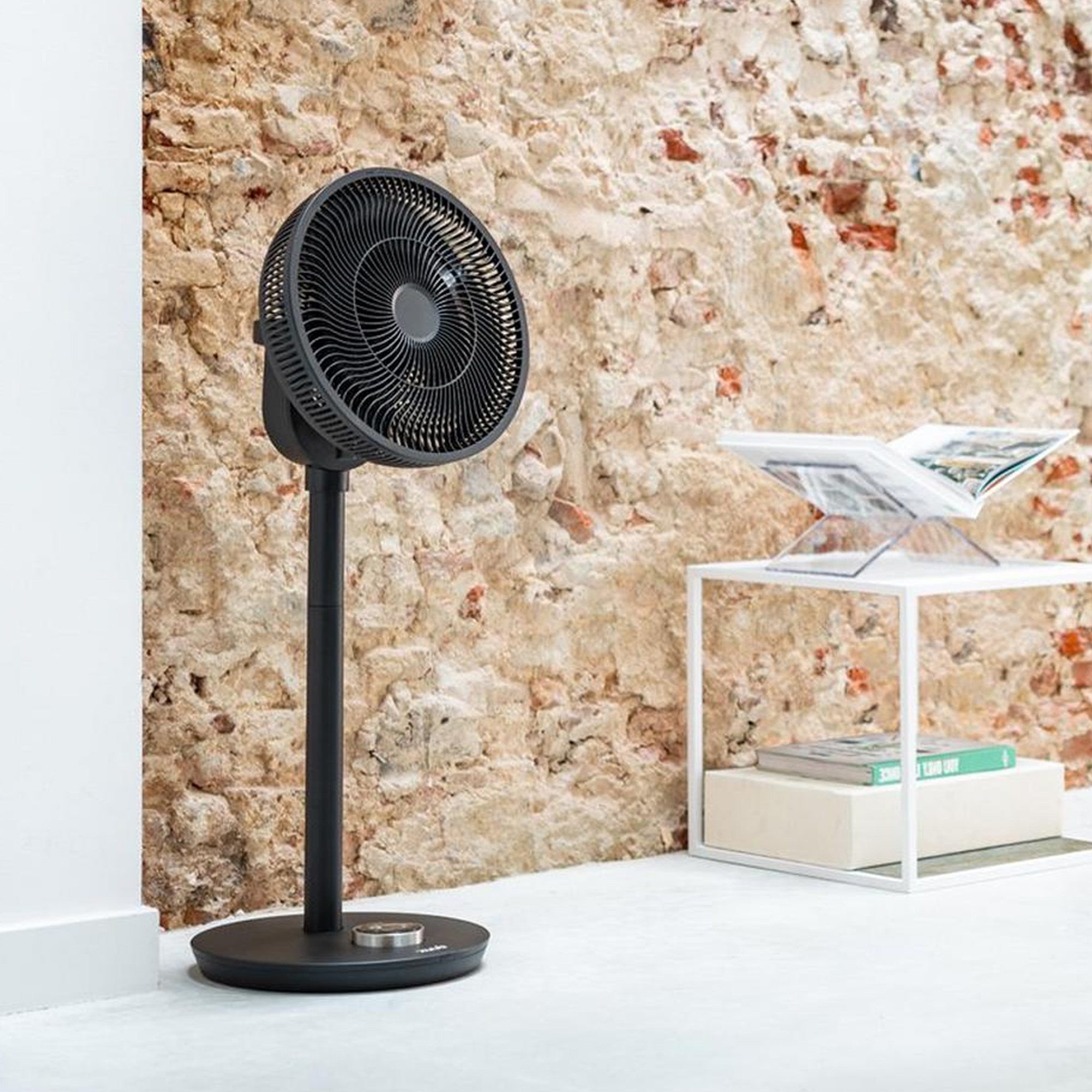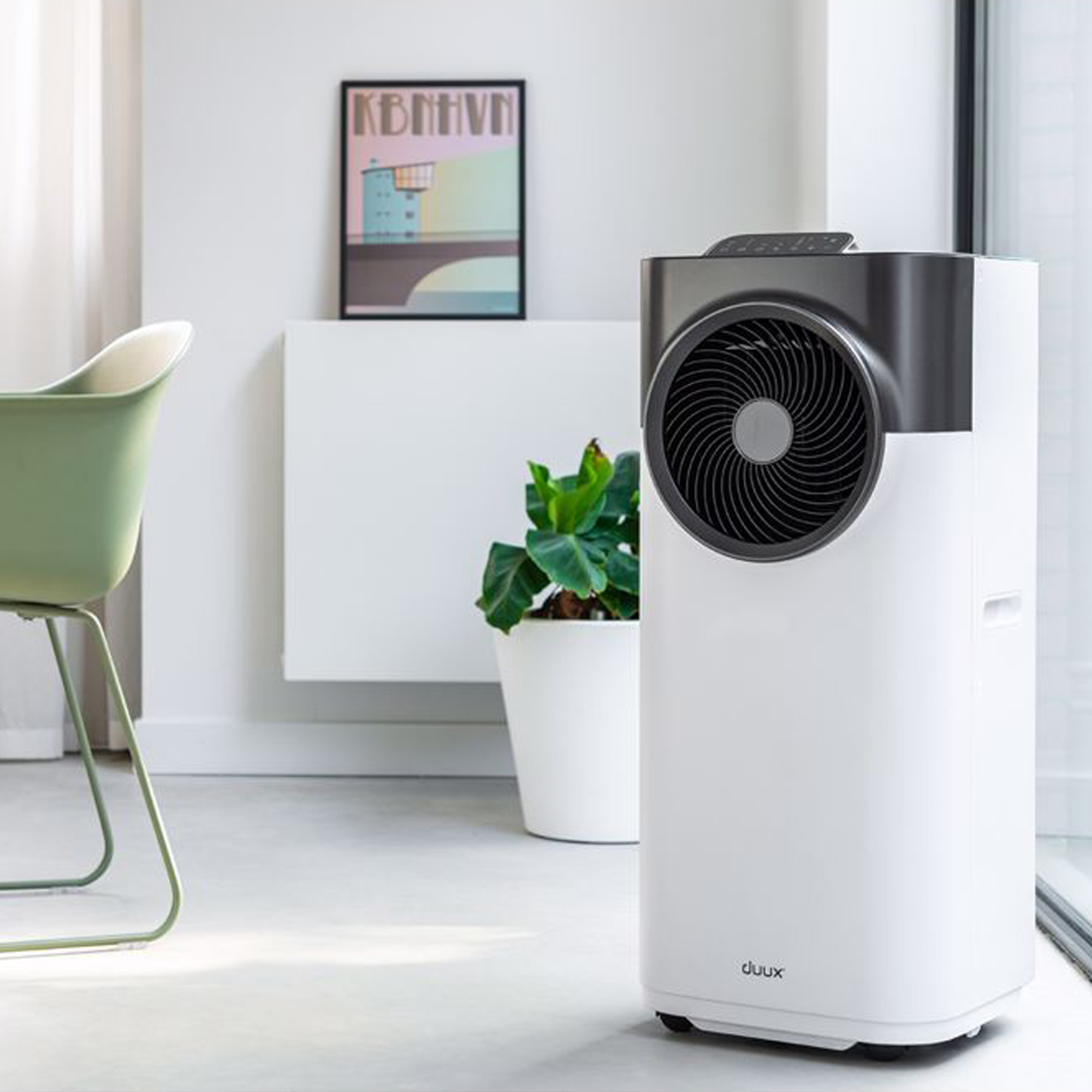
Fans have long been around as a tried and tested solution to help us stay cool during hotter periods. However, when deciding between an oscillating or still fan, which is the better option to help you effectively beat the heat?
Many of the best fans now come with oscillation as standard, with the most modern iterations equipped with several oscillating angles to suit your cooling needs. But, if you've got a trusty, old still fan that you're not yet willing to retire, you might wonder whether it's still a sufficient option for keeping a bedroom cool.
We've asked experts to explain the differences between a still and oscillating fan, and which is the better investment for staying cool.

As the quietest fan we've tested, the Duux Whisper Flex Ultimate Fan oscillates with a 105⁰ vertical swing, a 90⁰ horizontal swing, and a combined multi-directional oscillation. It's an investment, but its also wireless, Smart, and height-adjustable.

Shark's handy cordless fan is a winner for indoor and outdoor use. It features a timer, natural wind mode, night mode, goal temperature mode, and smart functionality when connected to WiFi, so you probably won't miss the oscillation.
'A still fan has been around for much longer than an oscillating fan, which is a newer invention,' begins Georgette Beacham at BiGDUG. 'A still fan simply blows the air in the only direction that it’s facing, representing a much more basic design. An oscillating fan, which blows the air across a wider area as it pans, has more complex mechanisms, often with multiple options which usually includes a still feature.'
Now we understand the difference between the two, which is the better option out of the two if staying the coolest is your biggest concern.
Is it better to have a fan oscillating or still?
Well, Katie Lilywhite, air treatment expert at AO.com helps us get our heads around what is best.
'When you’re using your fan to cool down your home this summer, it’s a far better idea to have it oscillating than running it still. Oscillating fans move from side to side, which simply helps to spread air across a wider area,' explains Katie.
Andrew Carmichael, Dyson's environmental care engineer, adds, 'Keeping cool is all about maximising the amount of air you have over your skin. A fan with a high peak velocity and that moves a large amount of air is bound to keep you the coolest.'

If this cool air is blowing over you constantly, the chances of staying cool for longer are far more likely. This is exactly where an oscillating fan excels in comparison to a still model.
Andrew explains that oscillating fans create a gentle breeze sensation throughout the room to keep you feeling comfortable, even after your body has already had the chance to cool down.
Unlike a portable air conditioner, fans cool the person as opposed to actively cooling the room itself (as we've explored in detail in our fan vs air conditioner explainer); therefore, the best way to mimic that consistent cooling sensation that an AC unit brings to a room is to invest in an oscillating fan that covers larger areas of space.

'An oscillating fan is the most effective way to distribute cool air throughout the whole room and increase air circulation, which in turn helps bring the overall temperature of the room down,' explains Jemma Pendlebury, product manager at Russell Hobbs.
On the other hand, using a still fan is best for targeting a specific area at an intense level. For example, if you're looking to cool down rooms serving appliance-intensive functions, like a laundry room or cooling down a kitchen during particularly hot weather.
An oscillating fan 'is particularly handy when you’re attempting to cool down a whole room, the room feels stuffy, or there’s more than one person in this space,' adds Katie.
'A good idea is to combine your fan with an air purifier or air conditioner – that way your fan will help to distribute the clean and cooled air better.'

FAQs
Is it better to let a fan oscillate?
If you have a fan that offers oscillation, allowing it to do so will increase air circulation in a room, making all the difference during hot weather. However, if you're looking to simply target a specific area for cooling, then keeping it static is your best bet.
When temperatures rise, keeping the air moving around will help make the room feel more comfortable and fresher due to a gentle breeze.
So, if keeping cool is your primary concern, it's definitely better to have a fan oscillating rather than keeping it still. However, whichever fan mode you decide to go with will depend entirely on the specific purpose you need it to serve.







